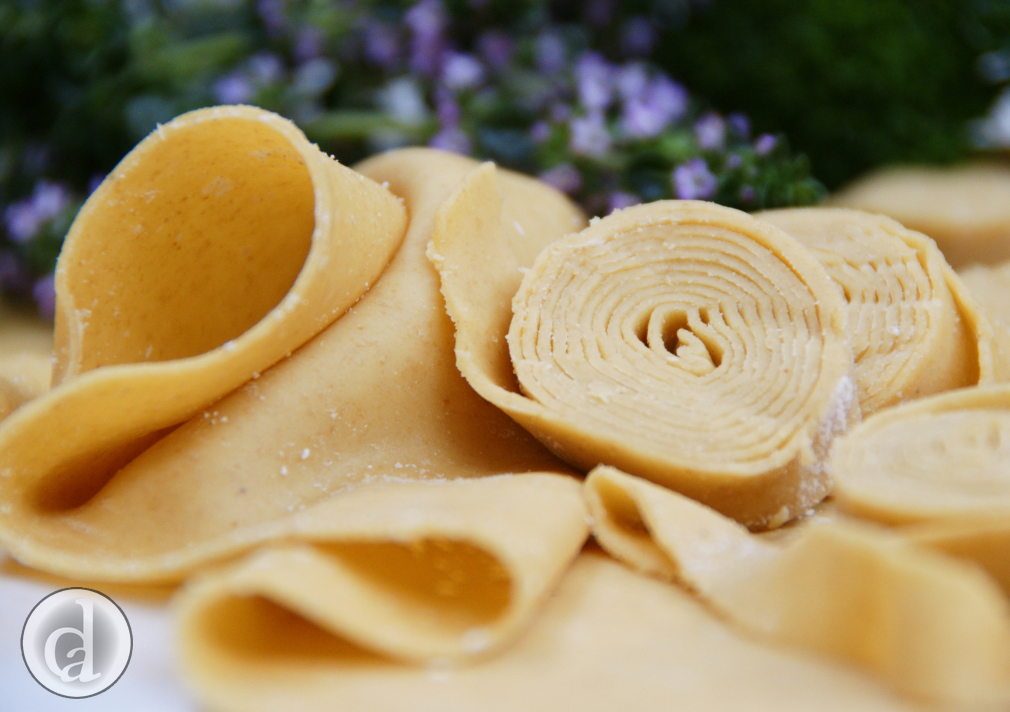Pasta
I love homemade pasta. I love the simplicity of making it; of slowly feeding the dough into the machine and gently laying out the emerging sheets.
I loved making this homemade pasta, my family ended up eating lasagne for dinner – all gluten free – and no one knew. The pasta, béchamel sauce and meat sauce all used Bakers' Magic Gluten free flour; the recipe for the pasta follows.
This recipe was designed specifically to be made with Bakers' Magic gluten free flour. The finished baked product will not be the same if you use another gluten free flour and you will need to adjust the recipe, particularly if the flour you're using contains rice flour.

Ingredients
225 g Bakers' Magic Gluten free flour
1 tsp salt
25 g oil (I used Rice Bran Oil)
3 eggs (“extra large” ~ 58 g each)
Method
I made the pasta using my Thermomix however a kitchen whiz or device with a blade would also work. The pasta could also be made using an electric mixer with the paddle hook but will take longer (maybe 8 minutes instead of 1).
Place all ingredients in the TM bowl.
Mix for 1 minute on speed 4.
If using another device; mix until all ingredients have combined and the dough is staying together.
Take dough out, it will be slightly sticky, wrap in plastic wrap or damp cloth to keep it moist. I let mine sit for approximately 20 minutes prior to rolling as I was trying to find all the pieces to the pasta machine.
Rolling the Dough
The easiest method to make the pasta sheets is using a pasta machine. My machine is about the same age as I am so it is a little bit creaky – I tend to oil the rollers before using it. Divide the dough into ~ 4 equal sized portions. Put a portion of the dough through the machine on the largest gap setting. Gently guide the dough with your hand when it is coming through the rollers. Fold the dough and repeat again on this setting. When you feel comfortable with feeding the dough into the machine and guiding the dough (pasta) out the gap can be decreased. Decrease the gap between the rollers by changing the setting. The thickness of the pasta will depend on how you will cook it. Lasagne sheets need to be slightly thicker than those used for fettuccine.
If you don’t have a pasta machine the dough can be rolled out by hand. Put a portion of the dough between two sheets of baking paper and roll out the dough until the required thickness has been achieved. To ensure the pasta is even in thickness follow this tip. Find two pieces of cardboard* (roughly the thickness that you want the pasta to be) place them on either side of the dough (My cardboard pieces are ~ 45 cm x 15 cm – I keep them handy for rolling out pastry, biscuit dough etc.). It is easier to work with the dough when it is between two sheets of baking paper. When rolling out the dough ensure the rolling pin is wide enough to span the dough and part of both pieces of cardboard. My rolling pin is large – 61 cm from handle to handle. Initially when rolling the pin will not rest on the cardboard pieces, however, when the dough is the same thickness as the cardboard it will. At this stage the dough should be all the same thickness.
* Since writing this recipe I have thrown away my cardboard pieces & had some stainless steel spacers made (thickness of 1 mm, 2 mm & 3 mm). I have also bought a silicon pastry mat & I love it.
To make fettuccine roll the dough up and cut into slices approximately 6 mm wide.
The fresh pasta will cook quickly in boiling water, ~ 2 minutes.
